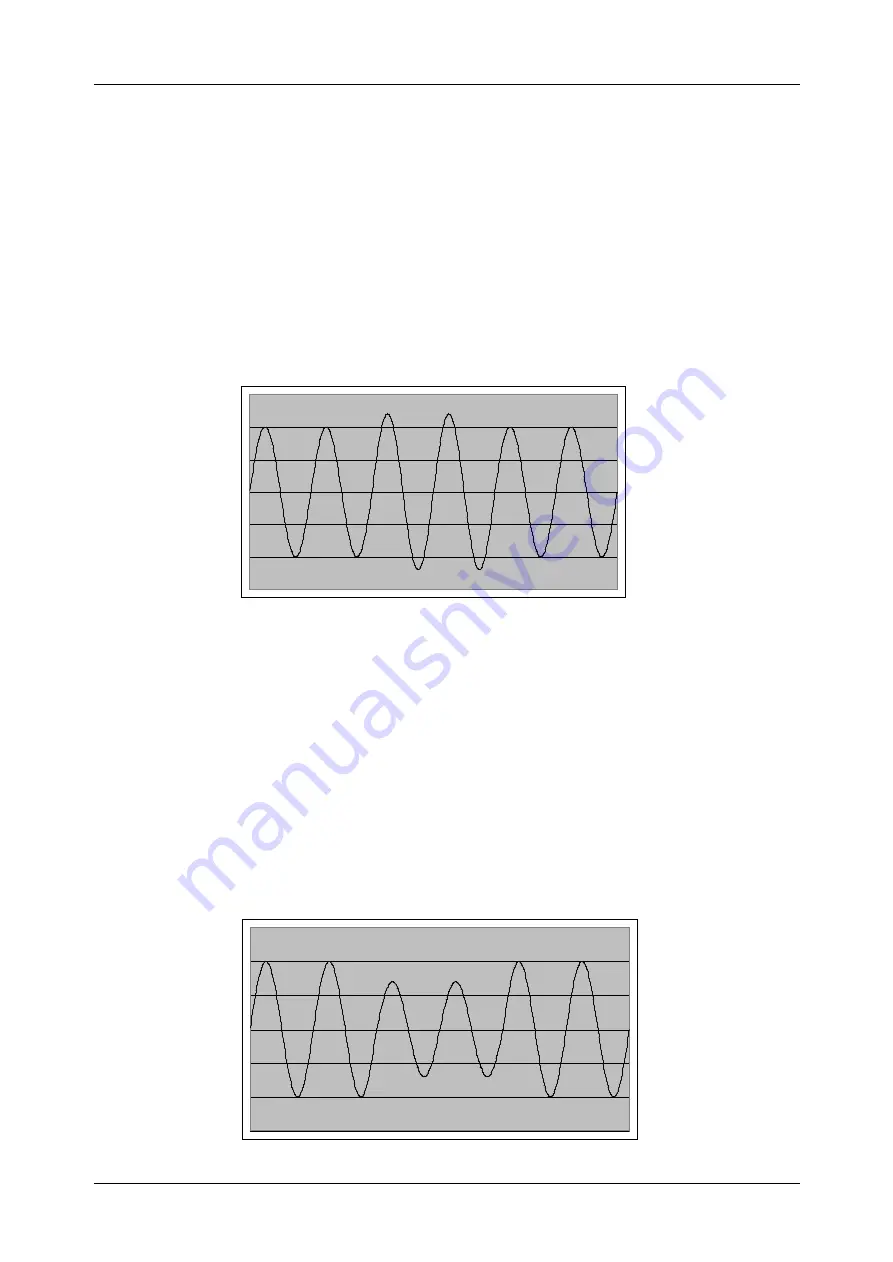
MI 2130 VoltScanner
Setting Up the VoltScanner
10
Voltage Swell
A voltage swell is an increase in line voltage that can last for an indefinite period. The
VoltScanner records swells that are above the set threshold for at least one cycle
(20ms/50Hz) with a 3 volts hysteresis.
Voltage swells are usually caused by fault conditions, the energization of large loads
which require high starting currents, intermittent loose connections in power wiring,
large load changes and power line switching. The fault condition can be close to or
remote from the point of interest. If swells reach too high a peak, they can damage
electrical equipment. The utility's voltage regulating equipment may not react quickly
enough to prevent all swells.
The next picture shows a short voltage swell lasting only two cycles.
Voltage Swell
Voltage Dip
A voltage dip is a decrease in line voltage that can last for an indefinite period. The
VoltScanner records dips that are below the set threshold for at least one cycle
(20ms/50Hz) with a 3 volts hysteresis.
Voltage dips are generally caused by faults occurring in the customers installations or in
the public distribution system. Common causes are short circuits on the electric power
system, motor starting, customer load additions, and large load additions in the utility
service area. Dips can cause computers and other sensitive equipment to malfunction
or simply shut off and can damage certain types of electrical equipment. The events
occur mostly in random manner. The majority of voltage dips have duration less than 1s
and depth less than 60%. The next picture shows a short voltage dip lasting only two
cycles.
Voltage Dip











































